SpaceCV and the Quest Institute: Pioneering STEM and ISS Education Through NGSS
By Kara Quinlan, Meghan White, and Ryan Gallagher
Space, the next frontier. Today’s students will be tomorrow’s scientists, astronauts, and inventors. How can we as educators teach and inspire students for careers that are not yet created? We have the power to inspire students to look beyond Earth and understand concepts that are larger and bigger than themselves. Yet, the awe-inspiring thought of teaching fundamental concepts that lay the foundation for future tech can be daunting. Often times as educators it is difficult to help students understand principles in science they cannot see. This school year I decided to tackle the vast topic of humans working in space as a 9th-grade physics and engineering teacher at High Tech High Chula Vista, project-based learning (PBL) public charter in the greater San Diego area.
Before the school year began, our district science team worked with the Next Generation Science Standards as a part of the CA NGSS K-8 Early Implementation Initiative. Although the focus of the initiative is K-8, we had an idea of collaborative science teaching across all grade levels, including high school. In this case, we took learnings from our elementary and middle school colleagues and decided to expand this novel approach to collaborate among high school courses. What did this translate to? It meant mentorship on a weekly basis with 9th-grade physics and 11th-grade biology students where they collaboratively worked towards a common goal. If NGSS is a holistic approach to learning, why can’t we as science teachers teach with a systems approach to learning? Thus our project, SpaceCV was born.
SpaceCV is a 9th and 11th-grade physics and biology collaborative at High Tech High Chula Vista, with multi-faceted STEM- and NGSS-aligned research done in partnership with the Quest Institute, International Space Station, industry, and other students and teachers with the goal of opening minds and challenging curiosity. The Quest Institute is an educational non-profit organization that develops and markets proprietary STEM-based educational programs and support materials for K-12 schools globally. The mission of the Quest Institute is to introduce, inspire, and ultimately engage students to understand what it means to pursue STEM-based careers.
SpaceCV came from wanting our students to emulate SpaceX and other cutting edge science initiatives. Partnerships support our goals to have students believe they have the power to do amazing science and to challenge notions of what high school students can accomplish. Our campus is located on the outer edges of San Diego in Chula Vista, hence CV. Students quickly took to the name, Space CV Launches, and our borrowed motto: we, “Dare mighty things,” (official motto of JPL).
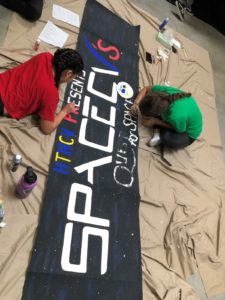
SpaceCV Launches – launched – with an experiment dealing with radiation. It started with organizing 9th and 11th grade students into groups called cohorts. Every Wednesday biology and physics students paired up with the same cohort to work. This was their final project (it’s useful to think of final projects in PBL as being similar to a performance task). The cohorts were challenged with planning and conducting an investigation to measure the influence of system components on the total energy in a system. Immediately my biology teacher counterpart, Megan White, suggested we look at blending concepts of NGSS into the experiment. Students would incorporate, for example, ideas around astronaut training and how they might maintain a homeostatic balance in microgravity (an important NGSS Disciplinary Core Idea, LS1.A).
Our experiment was titled, “Heat, Humidity, and Radiation”, and had the purpose of helping students better understand how heat moves on Earth, in Space, and how it influences humans with the ultimate goal of landing their projects on the International Space Station (ISS). They focused on thermodynamics and the physics of heat, radiation, and circuits. Students began by initially replicating experiments using a Lego Mindstorm ev3 (breadboard) to help their proficiency in writing code. They then were presented with design constraints of equipment on the ISS and designed and tested their own devices to these specifications. Students built, developed their own unique code, and tested sensors to monitor physical heat and humidity and the effects different colors (white and black) have on heating and how that changes in space, ultimately impacting spacesuit design. Students collaboratively worked together across grade levels to develop ways of thinking that applied their knowledge of what they were learning from their experiments. In one case, students considered space suit design by thinking of a space suit as a closed system that needs to balance energy flow.
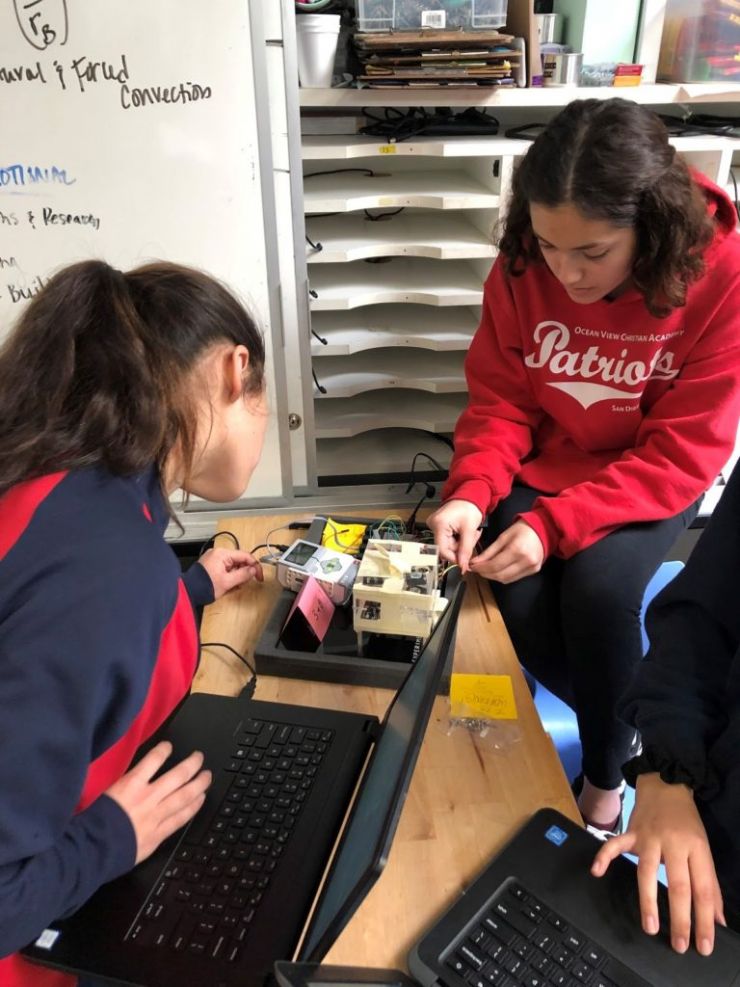
A team testing their code on an experiment cube

Full experiment cube assembly (with student team Notes to each other – this is needed as two cohorts share one set of materials)
Training with NGSS helped students focus by carefully defining the system under study through the specification of its boundaries and making a model of that system that would become a tool for understanding and testing ideas. Students found Crosscutting Concepts (CCCs) such as Energy and Matter and Systems and Systems Models to be the most helpful to them in collaborating to refining ideas across grade levels. Students built and ran their experiments on radiation on the ground unit in our classroom by testing absorption and radiation of basic materials in different colors to see differences in heating and cooling rates and the effect that microgravity has on radiation. The process evolved over several weeks of fine-tuning and increase scientific understanding from these 9th grade and 11th-grade scientists. Following the construction, experimental procedure and application of their knowledge, students produced lab reports with their data, observations, and hypothesis for the changes microgravity has on heat and humidity. Together, 9th and 11th graders assisted each other in coding, electronics, mechanical assembly, and final cumulative technical lab reports for every cohort of four to five students. Experiments were then run on the ISS, giving students the opportunity to compare their results to those done on the ISS. This real-world application and real data is the very thing science teachers dream of! Students saw science come to life!
Our partnership continued to grow outside of just the classroom. Community exhibitions followed where students explained their scientific findings to adults, families and industry professionals (whether it is getting student work on the walls, showcasing a class project, or hosting a whole-school exhibition with community members and experts, celebrate students’ work and learning by making it visible). Representatives from Quest Institute were special guests at the exhibition. Students were able to share how they obtained and evaluated their results and communicate their findings to this larger community who held a genuine interest in their work. With the Quest Institute partnership, our student’s code was reviewed by engineers and scientists and sent to the International Space Station where they re-ran our experiments from space. About two months later, High Tech High Chula Vista received the data back from the ISS, video footage of the experiments running, and the good news that two of our student’s work was moving on to another destination… our students’ work was going to be shared at the International Space Station Research and Development Conference 2019! Our collaboration paid off. NASA wanted to hear first hand the impact of completing real-world applications of science as a high school student and how it affected their perception of, “Dare mighty things.” Dare we did and in July, our students sat on a panel amongst adult professionals and built real-world collaborations to dare the impossible.
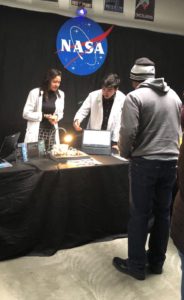
NGSS has given us a model for using systems thinking to integrate science, engineering, and language arts to prepare students for technology not yet developed. It demonstrated that SpaceCV was an effective skeletal structure that we could flesh out for other projects and afforded rich opportunity for community collaboration. Science education is pioneering the impossible through partnerships and the curiosity to create a future generation of forward thinkers. That is the next frontier.
Resources:
- CCC for Lab Report Template: Experiment Lab Report Template
- CCC Link of 9th Grade Lab Report: Experiment #1- Lab Report
- CCC YouTube Link of Project Process Video of all 9th graders of the full application of NGSS through Project-Based Learning: Watch Video
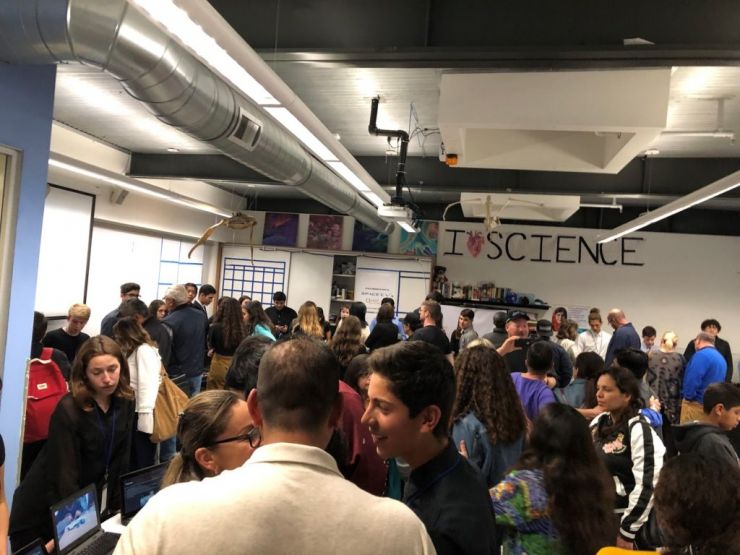
A collaborative exhibition of 9th and 11th grade cohorts presenting experiment #1
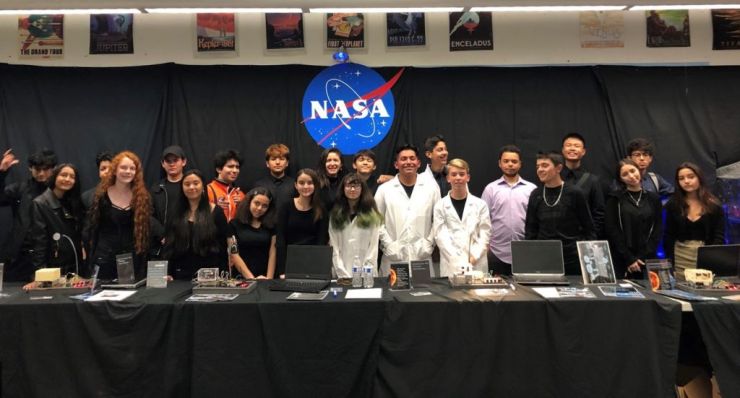
A quarter of the 9th and 11th grade cohorts with experiments on display In the classroom for Exhibition








